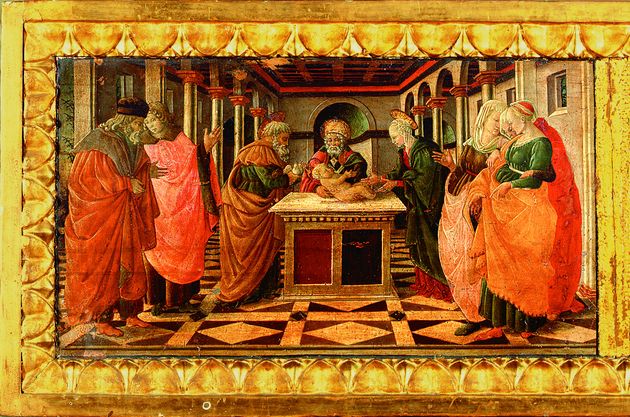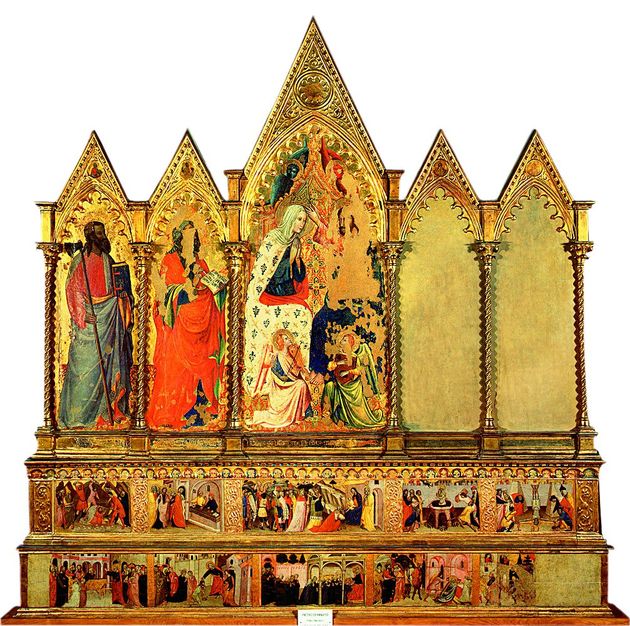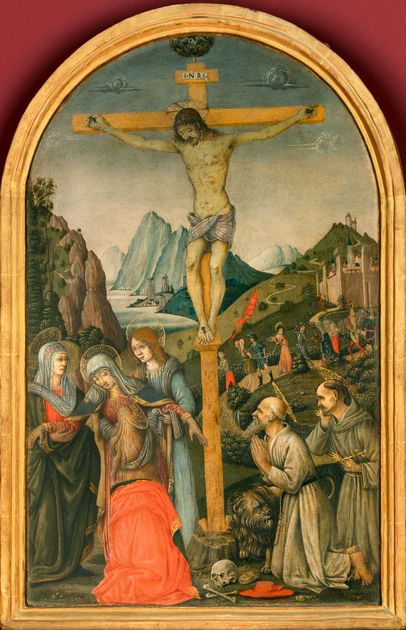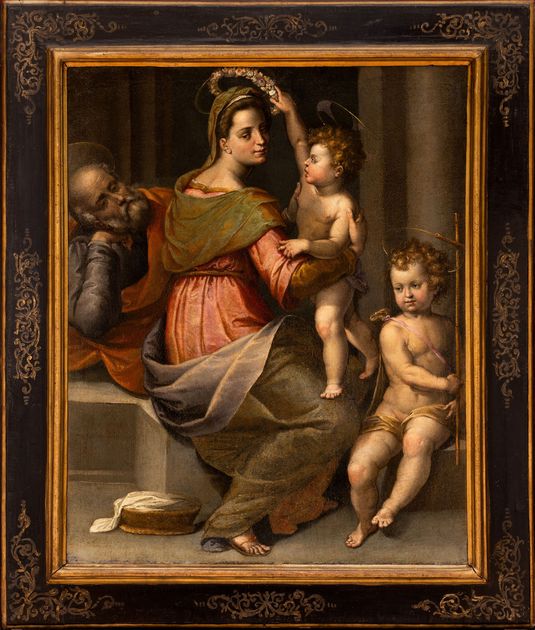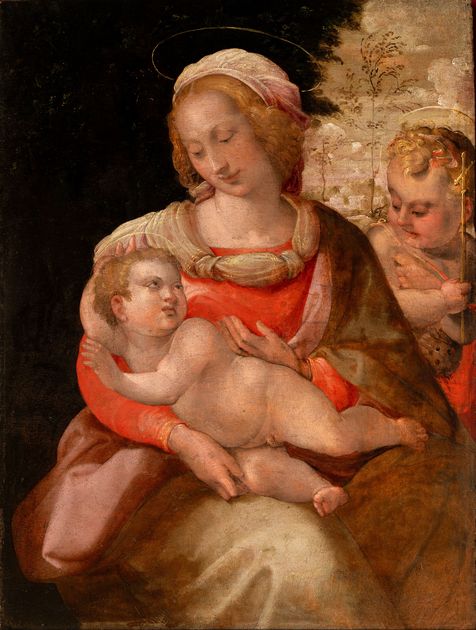This altarpiece with its fine gilded frame was commissioned to Filippino while he was at the peak of his successful career in Rome and Florence, where he died suddenly of angina two years later and was universally mourned. The painting was intended for the decoration of the new Audience or Council Room of the Town Hall, and this explains the inscription on the base of the work in which the Virgin exhorts the administrators to administer justice and help the poor.
The altarpiece, which is alas damaged by abrasions and burns, shows an almost Leonardesque sensitivity. The austere, simple scene, without any of the usual references to antiquity or decorative flourishes so dear to Vasari, is however enlivened by the refined colours of the rich drapery with its dazzling precious red lakes. In the rendering of the figures, we see an expressive, tense emphasis which anticipates 16th-century innovations. The figures, intimately gathered in the foreground, are immersed in a leaden, almost stormy atmosphere which makes the colours cleaner and more intense and accentuates the shadows. The landscape with its many ruins also adds to this climate of drama, with allusions to Savonarola’s religious teaching (solidly rooted in Prato at that time) and also to the sense of insecurity and fear which typified the period after the collapse of Renaissance certainties and equilibrium. A silent dialogue, a subtle psychological game, is conducted by the figures’ exchange of glances. The Child leans towards a skinny, dishevelled John the Baptist, who is indicating Him as “the lamb of God”, as the Mother looks on. Mary’s pale face with its heart-rending melancholy is almost identical to that of the young Stephen, the patron saint of the town.










